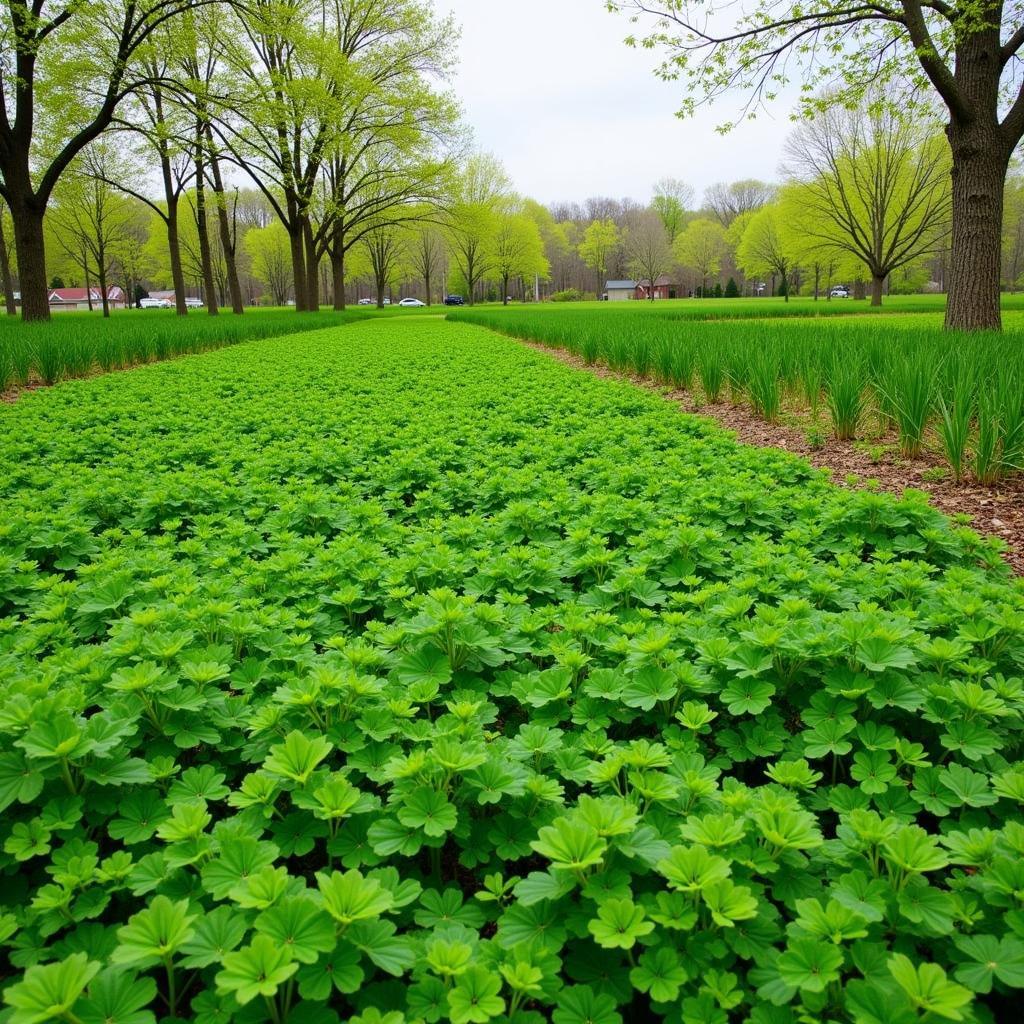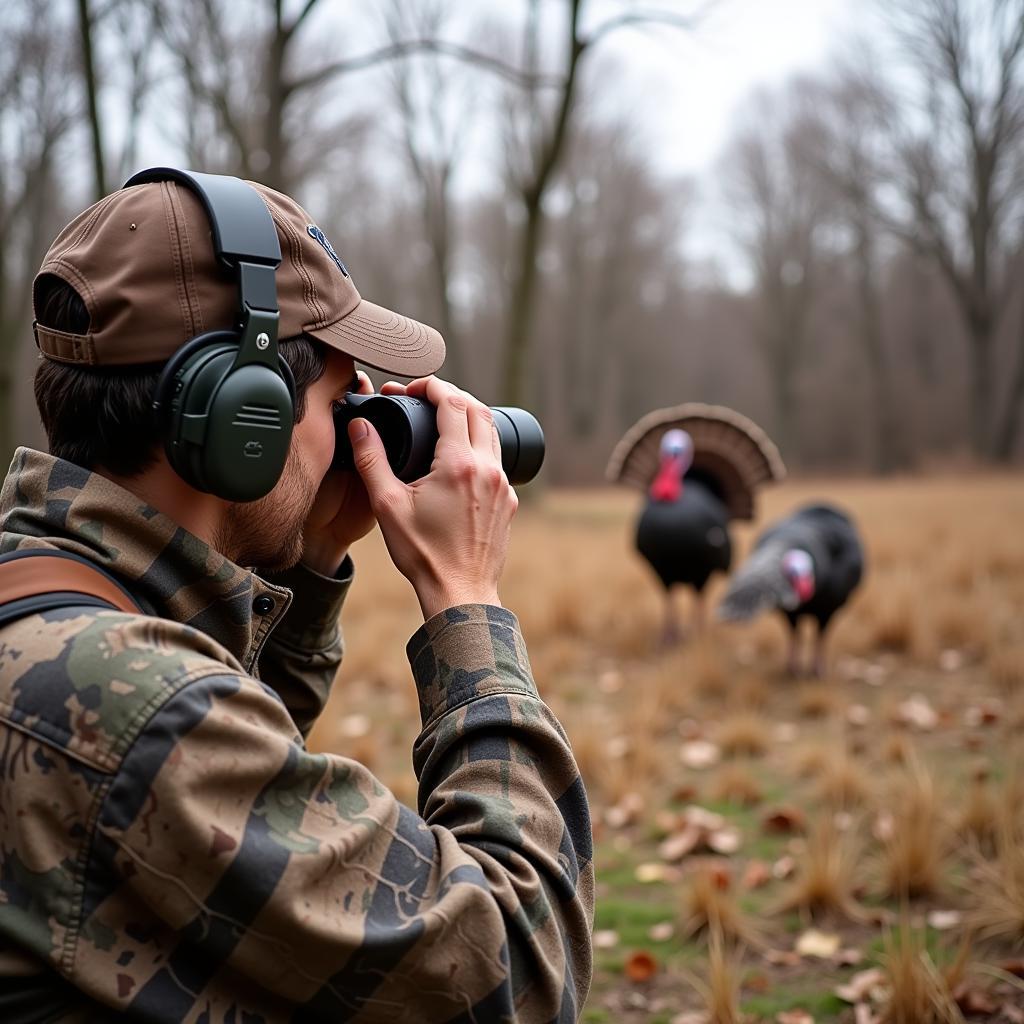Food plots for turkeys are a game-changer, literally. They can transform your hunting land into a thriving hub of activity, attracting these magnificent birds and offering a sustainable food source. Whether you’re a seasoned hunter or just starting, understanding how to cultivate the perfect food plot is crucial for success. This comprehensive guide dives deep into the art and science of establishing a food plot that turkeys will find irresistible.
Understanding the Turkey’s Palate
Turkeys are opportunistic omnivores, meaning they’ll eat just about anything they can find! This ranges from insects and seeds to berries and greens. However, creating a food plot that thrives means understanding their preferred food sources and catering to their seasonal needs. During the spring, protein-rich insects are crucial for breeding hens and growing poults. Summer sees a shift towards succulent greens and berries. As fall approaches, turkeys focus on carbohydrates and fats to prepare for winter, making nuts and seeds particularly appealing. Knowing these preferences is the first step in designing a successful Food Plot For Turkeys. Consider a spring food plot mix to attract turkeys during the breeding season.
 Turkey Food Plot with Spring Mix
Turkey Food Plot with Spring Mix
Selecting the Right Location and Preparing the Soil
Choosing the right spot for your food plot is as important as what you plant in it. Ideally, your plot should be located near a water source and offer a mix of open areas and cover. Turkeys need to feel safe while feeding, so proximity to trees or shrubs is beneficial. Soil testing is crucial for determining the pH and nutrient levels. This will guide you in choosing the right plants and amendments to ensure optimal growth. Proper soil preparation, including tilling and fertilization, creates a welcoming environment for seeds to germinate and thrive.
Best Food Plot Seeds for Turkeys
The seeds you choose will dictate the success of your food plot. Consider planting a variety of species to provide a balanced diet throughout the year. Clovers, particularly food plot clover, are excellent choices, offering protein and attracting insects. Chicory is another great option, as it provides a nutritious forage source, especially when planted as chicory food plot seed. Other popular choices include chufa, which produces small tubers turkeys love, and various grains like wheat, oats, and rye. Bio Logic food plot seed offers a balanced blend to cater to the needs of turkeys and other wildlife. For more specialized needs, explore the diverse options available in food plots for turkey.
 Turkeys Feeding on Clover in a Food Plot
Turkeys Feeding on Clover in a Food Plot
Maintaining and Enhancing Your Food Plot
Creating a food plot isn’t a one-time effort; it requires ongoing maintenance. Regular weeding and fertilization are essential to ensure the plants remain healthy and productive. Consider rotating your crops every few years to prevent soil depletion and disease buildup. Adding supplemental feeding stations, especially during lean times, can further enhance your food plot’s attractiveness. Don’t forget to scout your plot regularly to monitor turkey activity and adjust your strategies as needed.
 Hunter Scouting Turkey Food Plot
Hunter Scouting Turkey Food Plot
Conclusion
Creating a successful food plot for turkeys is a rewarding endeavor that can significantly improve your hunting experience. By understanding their dietary needs, selecting the right location and seeds, and maintaining your plot diligently, you can create a haven for these magnificent birds. So, get out there, get your hands dirty, and start building the ultimate food plot for turkeys! Food plots for turkeys are a true investment in the future of your hunting land.
FAQs
- What is the best time to plant a food plot for turkeys? Spring and fall are generally the best times, depending on the specific seed varieties.
- How large should a turkey food plot be? The size depends on your land and turkey population, but 1/4 to 1/2 acre is a good starting point.
- Do turkeys prefer sunny or shady food plots? A mix of both is ideal, providing open feeding areas and shady resting spots.
- How often should I fertilize my turkey food plot? Follow the recommendations for the specific fertilizer and plant species you choose.
- Can I plant a food plot for turkeys in a wooded area? Yes, but you may need to clear some trees to allow enough sunlight to reach the plants.
- What are some common mistakes to avoid when creating a food plot? Poor soil preparation, choosing the wrong seeds, and neglecting maintenance are common pitfalls.
- How can I protect my food plot from deer? Fencing or deer repellent can help deter deer from overgrazing your turkey food plot.
Common Scenarios
- Scenario 1: A beginner hunter wants to attract more turkeys to their property. Solution: Start with a small food plot using a pre-mixed blend like bio logic food plot seed and focus on proper soil preparation.
- Scenario 2: An experienced hunter wants to improve the quality of their existing food plot. Solution: Consider adding diversity to the plant species, including options like food plot clover or chicory food plot seed, and implement a soil testing and fertilization regimen.
- Scenario 3: A landowner wants to create a food plot that benefits turkeys and other wildlife. Solution: Choose a mix of plants that cater to the dietary needs of multiple species, such as clovers, grains, and berries.
Further Reading
For more information on specific food plot mixes, check out our articles on spring food plot mix.
Contact Us
For assistance, please contact us at Phone Number: 02437655121, Email: [email protected] or visit our address: 3PGH+8R9, ĐT70A, thôn Trung, Bắc Từ Liêm, Hà Nội, Việt Nam. We have a 24/7 customer support team.